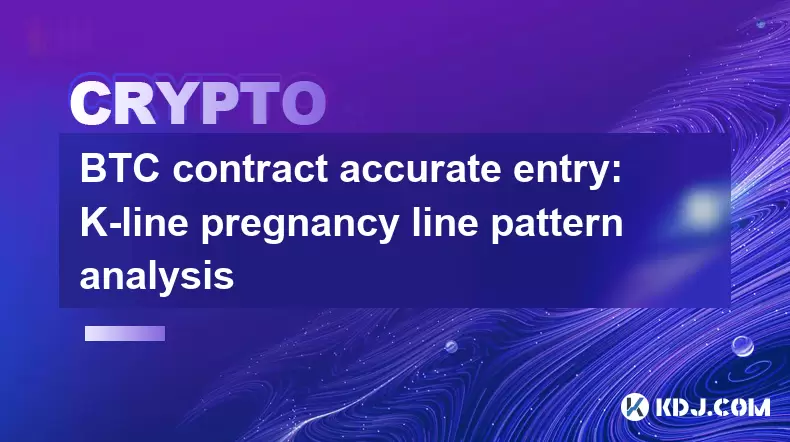-
 Bitcoin
Bitcoin $116700
0.24% -
 Ethereum
Ethereum $3973
4.34% -
 XRP
XRP $3.283
7.68% -
 Tether USDt
Tether USDt $1.000
0.01% -
 BNB
BNB $789.8
2.27% -
 Solana
Solana $176.2
3.31% -
 USDC
USDC $0.9999
0.00% -
 Dogecoin
Dogecoin $0.2238
5.14% -
 TRON
TRON $0.3389
-0.51% -
 Cardano
Cardano $0.7907
4.03% -
 Stellar
Stellar $0.4527
10.02% -
 Hyperliquid
Hyperliquid $41.07
4.27% -
 Sui
Sui $3.794
1.77% -
 Chainlink
Chainlink $19.49
10.40% -
 Bitcoin Cash
Bitcoin Cash $580.9
0.74% -
 Hedera
Hedera $0.2617
4.32% -
 Avalanche
Avalanche $23.41
3.67% -
 Ethena USDe
Ethena USDe $1.001
-0.03% -
 Litecoin
Litecoin $122.4
1.38% -
 Toncoin
Toncoin $3.364
1.49% -
 UNUS SED LEO
UNUS SED LEO $8.988
0.37% -
 Shiba Inu
Shiba Inu $0.00001295
2.82% -
 Uniswap
Uniswap $10.62
5.75% -
 Polkadot
Polkadot $3.922
4.46% -
 Dai
Dai $1.000
0.01% -
 Bitget Token
Bitget Token $4.494
2.15% -
 Monero
Monero $268.0
-1.30% -
 Cronos
Cronos $0.1523
3.68% -
 Pepe
Pepe $0.00001127
4.43% -
 Aave
Aave $285.4
4.85%
BTC contract accurate entry: K-line pregnancy line pattern analysis
The K-line pregnancy line pattern, crucial for BTC contract traders, signals potential trend reversals; it's identified by two candlesticks where the second is engulfed by the first.
Jun 01, 2025 at 12:28 pm

Understanding the K-Line Pregnancy Line Pattern in BTC Contracts
The K-line pregnancy line pattern is a crucial technical analysis tool used by traders in the cryptocurrency market, particularly when dealing with Bitcoin (BTC) contracts. This pattern, also known as the Harami pattern, is a significant indicator that can signal potential reversals in the market trend. Understanding and accurately identifying this pattern can be a game-changer for traders looking to enter or exit BTC contracts at optimal times.
The K-line pregnancy line pattern is characterized by two candlesticks where the second candlestick is completely engulfed by the body of the first candlestick. This pattern can be bullish or bearish, depending on the preceding trend. In a bullish scenario, it suggests a potential upward reversal after a downtrend, while in a bearish scenario, it indicates a possible downward reversal after an uptrend.
Identifying the Bullish Pregnancy Line Pattern in BTC Contracts
To accurately identify a bullish pregnancy line pattern in BTC contracts, traders need to pay attention to specific characteristics. The pattern occurs after a downtrend and consists of two candlesticks:
- The first candlestick is a long bearish candlestick, indicating continued downward momentum.
- The second candlestick is a smaller bullish candlestick that is entirely contained within the body of the first candlestick.
When you spot this pattern on a BTC contract chart, it suggests that the selling pressure may be weakening, and a potential upward reversal could be on the horizon. Traders often use this as a signal to enter long positions in anticipation of a price increase.
Identifying the Bearish Pregnancy Line Pattern in BTC Contracts
Conversely, the bearish pregnancy line pattern is identified after an uptrend and consists of two candlesticks:
- The first candlestick is a long bullish candlestick, indicating continued upward momentum.
- The second candlestick is a smaller bearish candlestick that is entirely contained within the body of the first candlestick.
Spotting this pattern on a BTC contract chart suggests that the buying pressure may be diminishing, and a potential downward reversal could be imminent. Traders might use this as a signal to enter short positions in anticipation of a price decrease.
Practical Steps to Analyze the Pregnancy Line Pattern in BTC Contracts
Analyzing the pregnancy line pattern in BTC contracts requires a systematic approach. Here are the steps to effectively identify and analyze this pattern:
- Select a reliable trading platform: Ensure you are using a platform that provides accurate and up-to-date BTC contract data.
- Choose the appropriate timeframe: Depending on your trading strategy, select a timeframe that aligns with your goals, whether it's short-term or long-term trading.
- Identify the trend: Before looking for the pregnancy line pattern, determine the current trend in the BTC contract market. Is it an uptrend or a downtrend?
- Locate the pattern: Scan the chart for the two-candlestick pattern described earlier. Pay attention to the size and position of the candlesticks relative to each other.
- Confirm the pattern: Once you spot the potential pattern, confirm it by checking if the second candlestick is entirely within the body of the first candlestick.
- Analyze additional indicators: To increase the accuracy of your entry, consider using other technical indicators such as moving averages, RSI, or MACD to confirm the potential reversal.
Entry Strategies Based on the Pregnancy Line Pattern in BTC Contracts
Once you have identified the pregnancy line pattern in BTC contracts, the next step is to develop an entry strategy. Here are some strategies based on the pattern:
- Bullish entry strategy: After identifying a bullish pregnancy line pattern, consider entering a long position. Set your entry point slightly above the high of the second candlestick to confirm the upward momentum. Place a stop-loss order below the low of the pattern to manage risk.
- Bearish entry strategy: Upon spotting a bearish pregnancy line pattern, consider entering a short position. Set your entry point slightly below the low of the second candlestick to confirm the downward momentum. Place a stop-loss order above the high of the pattern to manage risk.
- Combining with other indicators: For a more robust strategy, combine the pregnancy line pattern with other technical indicators. For example, if the RSI shows overbought conditions before a bearish pattern, it could strengthen the case for a downward reversal.
Risk Management and Position Sizing in BTC Contracts
Effective risk management is crucial when trading BTC contracts based on the pregnancy line pattern. Here are some key considerations:
- Determine your risk tolerance: Before entering any trade, assess how much risk you are willing to take. This will help you set appropriate stop-loss levels.
- Calculate position size: Based on your risk tolerance and the stop-loss level, calculate the size of your position. A common rule of thumb is to risk no more than 1-2% of your trading capital on a single trade.
- Monitor and adjust: Keep an eye on the market conditions and be prepared to adjust your stop-loss and take-profit levels as the trade progresses.
Frequently Asked Questions
Q1: Can the pregnancy line pattern be used in conjunction with other patterns?
A1: Yes, the pregnancy line pattern can be effectively combined with other technical patterns and indicators. For example, traders often use it alongside the engulfing pattern or the doji to confirm potential reversals in BTC contracts. Additionally, combining it with momentum indicators like the RSI can provide further validation of the pattern's predictive power.
Q2: How reliable is the pregnancy line pattern for predicting BTC contract price movements?
A2: The reliability of the pregnancy line pattern in predicting BTC contract price movements can vary depending on market conditions and the timeframe used. While it is a strong indicator, no single pattern guarantees success. Traders often find it more reliable when used in conjunction with other technical analysis tools and in the context of broader market trends.
Q3: What are some common mistakes traders make when using the pregnancy line pattern in BTC contracts?
A3: Some common mistakes include entering trades too early without waiting for confirmation, ignoring the overall market trend, and not using proper risk management. Traders may also misinterpret the pattern by not ensuring the second candlestick is fully contained within the first, leading to false signals.
Q4: How can I practice identifying the pregnancy line pattern in BTC contracts?
A4: To practice identifying the pregnancy line pattern, use a demo trading account provided by many cryptocurrency exchanges. This allows you to analyze historical BTC contract data without risking real money. Additionally, using charting software with historical data can help you practice spotting the pattern in different market conditions.
Disclaimer:info@kdj.com
The information provided is not trading advice. kdj.com does not assume any responsibility for any investments made based on the information provided in this article. Cryptocurrencies are highly volatile and it is highly recommended that you invest with caution after thorough research!
If you believe that the content used on this website infringes your copyright, please contact us immediately (info@kdj.com) and we will delete it promptly.
- Coinbase, Cosmos, and dYdX: Navigating the Crypto Currents
- 2025-08-09 06:30:16
- BNB Price, Altcoins, and Predictions: What's the Buzz?
- 2025-08-09 06:30:16
- Crypto Presale Projects Primed for Gains in 2025: A New Yorker's Take
- 2025-08-09 06:50:15
- Ruvi AI: The Millionaire Maker Poised for a Price Spike?
- 2025-08-09 06:50:15
- MAGACOIN FINANCE: August 2025's Standout Presale - Is it the Next Big Thing in Crypto Finance?
- 2025-08-09 06:55:27
- Token Buybacks, Onchain Data, and Developers: What's Buzzing in Crypto
- 2025-08-09 05:10:15
Related knowledge

Can the Bitcoin protocol be changed?
Aug 07,2025 at 01:16pm
Understanding the Bitcoin ProtocolThe Bitcoin protocol is the foundational set of rules that govern how the Bitcoin network operates. It defines every...

What happens to Bitcoin transactions once they are confirmed?
Aug 09,2025 at 05:22am
Understanding Bitcoin Transaction ConfirmationWhen a Bitcoin transaction is initiated, it is broadcast to the network and placed in a pool of unconfir...

How are Bitcoin transactions verified?
Aug 08,2025 at 06:57am
Understanding Bitcoin Transaction VerificationBitcoin transactions are verified through a decentralized network of nodes and miners that ensure the le...

How does decentralization make Bitcoin secure?
Aug 08,2025 at 09:35am
Understanding Decentralization in BitcoinDecentralization is a foundational principle of Bitcoin's architecture and plays a critical role in its secur...

What are some common misconceptions about Bitcoin?
Aug 07,2025 at 07:22pm
Bitcoin is Just Like Regular MoneyA widespread misconception is that Bitcoin functions identically to traditional fiat currencies like the US dollar o...

What is the role of nodes in the Bitcoin network?
Aug 08,2025 at 04:14pm
Understanding the Function of Nodes in the Bitcoin NetworkNodes are fundamental components of the Bitcoin network, serving as the backbone that ensure...

Can the Bitcoin protocol be changed?
Aug 07,2025 at 01:16pm
Understanding the Bitcoin ProtocolThe Bitcoin protocol is the foundational set of rules that govern how the Bitcoin network operates. It defines every...

What happens to Bitcoin transactions once they are confirmed?
Aug 09,2025 at 05:22am
Understanding Bitcoin Transaction ConfirmationWhen a Bitcoin transaction is initiated, it is broadcast to the network and placed in a pool of unconfir...

How are Bitcoin transactions verified?
Aug 08,2025 at 06:57am
Understanding Bitcoin Transaction VerificationBitcoin transactions are verified through a decentralized network of nodes and miners that ensure the le...

How does decentralization make Bitcoin secure?
Aug 08,2025 at 09:35am
Understanding Decentralization in BitcoinDecentralization is a foundational principle of Bitcoin's architecture and plays a critical role in its secur...

What are some common misconceptions about Bitcoin?
Aug 07,2025 at 07:22pm
Bitcoin is Just Like Regular MoneyA widespread misconception is that Bitcoin functions identically to traditional fiat currencies like the US dollar o...

What is the role of nodes in the Bitcoin network?
Aug 08,2025 at 04:14pm
Understanding the Function of Nodes in the Bitcoin NetworkNodes are fundamental components of the Bitcoin network, serving as the backbone that ensure...
See all articles

























































































